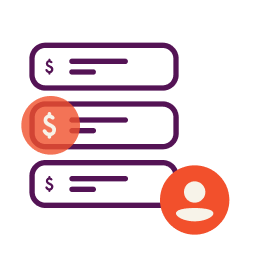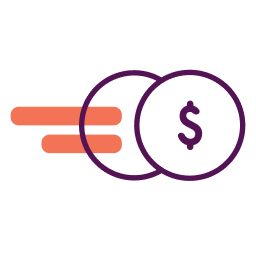This story was updated March 23, 2023 to reflect the latest Federal Reserve rate increase.
The Fed continues to raise interest rates in an attempt to rein in inflation, and small business owners will face higher borrowing costs as a result. Here’s what you can do.
The Federal Reserve announced on March 22, 2022 it raised a key interest rate by .25 percentage points, moving the target range for the federal funds rate to between 4.75 and 5%. The federal funds rate is a benchmark interest rate that often affects other interest rates such as the prime rate. As a result, the prime rate is now 8%. Both consumers and small business owners continue to be affected.
Many small business owners have endured a brutal couple of years, and still struggle with lingering pandemic-related challenges, rising costs, supply chain woes and a tight labor market. The Fed rate increase may feel like yet another setback.
Here’s how the Fed rate hike may impact small business owners, and steps to take to help your business weather rising rates.
Why Has the Federal Reserve Raised Interest Rates?
Interest rates had been near 0 since the pandemic, and the Fed had been hesitant to raise rates while the U.S. economy was still dealing with the effects of the coronavirus pandemic. However, the economy is now dealing with significant inflation that affects both businesses and their customers. Rate hikes are designed to help slow inflation down.
How much they will help remains to be seen, but this rate increase continues to be part of the Fed’s efforts to curb inflation and protect the economy.
The Impact of Fed Interest Rates on Small Businesses
Small business borrowing (aside from COVID relief loans) has recently begun to recover from pandemic lows with banks and other lenders reporting increasing demand.
Business owners searching for financing in the next few months will notice higher rates. Since business loans often involve larger loan amounts, they are likely to notice the effect of higher rates more quickly than consumers who have loans with smaller balances.
Business owners with outstanding loans may see rates rise, depending on the types of loans they carry. Here’s how it will impact some of the post popular types of business financing:
Lines of credit: Variable interest rates are common on lines of credit, which means the rates businesses pay on this popular form of small business financing are likely to increase. This initial rate hike should have a minimal impact for borrowers with modest balances, but for those with large balances this and subsequent rate hikes may lead to noticeable increases in payments.
Business credit cards: Most credit cards carry variable rates tied to the prime rate, which in turn is impacted by the federal funds rate. That means rates will rise for the vast majority of business owners with credit cards. These initial rate hikes are relatively small, and minimum payments for business owners aren’t likely to be significantly impacted. However, some businesses carry significant credit card debt. And with rates likely to increase again, costs will go up. In addition, those relying on 0% balance transfers or introductory offers may find the rate after that offer expires is higher than anticipated.
SBA loans: Borrowers who took advantage of low-cost COVID-19 Economic Injury Disaster Loans (EIDL) won’t be affected by this hike as those loans carry a fixed rate of 3.75% for the life of the loan. Other SBA loans, including loans in the popular 7(a) program, offer both fixed and variable interest rates and the latter will be impacted by future rate increases.
Of course, business owners are consumers too, and may find their personal pocketbooks squeezed as their consumer credit card rates rise, or if they are shopping for mortgages or car loans.
How Much Are Rates Expected to Increase in 2023?
There may be another rate increase in May 2023. Future interest rate hikes will depend on many different factors including how long the U.S. economy struggles with high inflation, whether another coronavirus variant causes future lockdowns, how long oil prices continue to stay high, and even what happens in the Russia/Ukraine war. As the Fed’s Summary of Economic Projections notes, “As with real activity and inflation, the outlook for the future path of the federal funds rate is subject to considerable uncertainty.”
It seems quite clear, though, that rates are likely to continue to rise throughout this year and the next, and business owners should be prepared.
How Small Businesses Can Cope with Rising Interest Rates
There are several ways business owners can cope with rising interest rates:
- Get financing sooner rather than later. Some business owners have been reluctant to borrow during the pandemic, and with good reason. But waiting too long to secure financing may mean settling for higher-cost financing or even potentially not qualifying at all. At a minimum, business owners without a line of credit should consider securing one.
- Deal with credit card debt. Pay down high-rate credit card debt if possible, or refinance it with a low-rate credit card balance transfer or even a term loan. Consider shopping for a low-rate credit card.
- Refinance variable-rate loans. Consider refinancing a variable-rate loan with a fixed-rate loan. Despite this rate hike, interest rates overall remain attractive for many types of commercial financing. Now may be a good time to secure a loan with a fixed interest rate and predictable payments.
- Focus on financial health. The lowest rates often go to financially healthy borrowers. That includes those with good credit scores (personal credit and/or business credit), and strong revenues documented by business bank statements. Strong credit and revenues can help entrepreneurs qualify for the best business loans.
Business owners can turn to Nav to help them find the best business financing. With Nav, business owners can search for financing from a variety of lenders without impacting their credit scores. They will find options based on their unique data and qualifications. And they’ll get unique insights into their business financial health to help them qualify for better financing in the future.
This article was originally written on March 16, 2022 and updated on March 31, 2023.



Have at it! We'd love to hear from you and encourage a lively discussion among our users. Please help us keep our site clean and protect yourself. Refrain from posting overtly promotional content, and avoid disclosing personal information such as bank account or phone numbers.
Reviews Disclosure: The responses below are not provided or commissioned by the credit card, financing and service companies that appear on this site. Responses have not been reviewed, approved or otherwise endorsed by the credit card, financing and service companies and it is not their responsibility to ensure all posts and/or questions are answered.